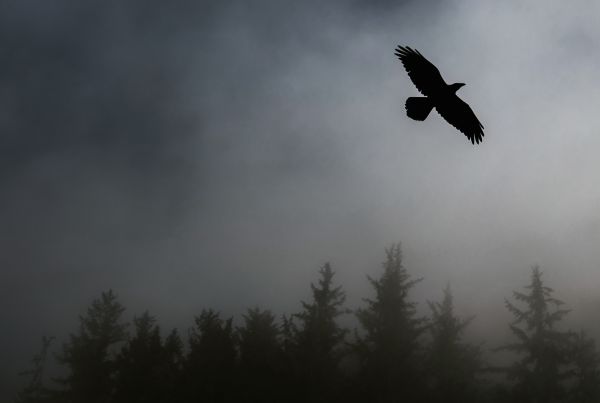As our futures unfold alongside wildfires scorching millions of hectares of land, intensifying flooding on coastlines, and constant disruptions and threats to food systems, the question at the heart of climate litigation becomes more urgent: Who is responsible for the climate crisis? And, what legal obligations do governments have to stop it?
Around the globe, people have been taking action to slow down or halt the overextraction and overconsumption that is devastating our planet for decades. One avenue that those with hope are taking is turning to the courts to demand action. In particular, youth and Indigenous leaders are making the legal argument that climate inaction isn’t just a policy failure, it’s a violation of fundamental human rights.
Climate litigation as a global movement
The global wave of climate lawsuits isn’t new. Even before the 2015 Paris Agreement, which aimed to limit global warming to 1.5°C, there were groups and individuals challenging governments over inadequate climate action and policies.
The Paris Agreement itself, while not legally binding, did spark a global push to hold governments accountable to a new standard. With the Paris Agreement, governments committed to a measurable benchmark that was meant to inform policy and industry regulation decisions across the world.
In the Netherlands, the Urgenda Foundation v. State of the Netherlands case saw the Urgenda environmental group, along with 900 Dutch citizens, sue the government because of not doing enough to slow rising temperatures. With the 2019 decision, the Dutch government was required to limit greenhouse gas emissions to 25% below 1990 levels by 2020.
In Germany in 2020, a group of youth argued that the government’s existing climate policy placed too much of a burden on future generations and that it was infringing on their fundamental rights under their constitution. This win led Germany to be tasked with defining clearer reduction plans for post‑2030 periods.
In 2018, a group of 25 youth in Colombia filed the constitutional lawsuit, Future Generations v. Ministry of the Environment and Others, against various government entities, municipalities, and corporations. The Future Generations asserted that climate change, being exacerbated by the state’s failure to meet its zero-deforestation target in the Amazon, violated their fundamental rights to life, health, food, water, and a healthy environment. Going all the way to the Supreme Court in Colombia, it was affirmed that there is an interconnectedness of environmental protection and fundamental human rights. This win went a step further to recognize the Colombian Amazon as a “subject of rights,” which entitled the Amazon to protection, conservation, maintenance, and restoration. The overall outcome is that the government had to develop and implement action plans to address deforestation in the Amazon.
These are just a handful of examples of the growing movement to hold governments accountable to climate action through the courts. The recent July 2025 advisory opinion announced by the Inter-American Court on Human Rights articulates that states must protect the human right to a stable, healthy climate — including duties toward future generations. While signs of climate change show no signs of slowing, neither do the swathes of people who believe we can and must do better, not just for ourselves now, but for the generations of people, flora, fauna, and funga yet to come.
Section 7 and Canada’s Constitution
In Canada, the strongest constitutional tool for climate litigation so far has been Section 7 of the Charter of Rights and Freedoms (the Charter), which guarantees the right to life, liberty, and security of the person. Section 15, which protects equality rights, has also been central, especially in highlighting how the climate crisis disproportionately impacts youth and Indigenous communities.
Consistently, lower courts have deemed these constitutional challenges as “non-justiciable,” essentially saying that climate policy is a political issue best left to legislative decision-making, not to the courts. But that changed in 2020 when the Ontario Superior Court of Justice dismissed a motion from Ontario to strike the Mathur case. When the Federal Court of Appeal overturned the decisions to strike the La Rose and Misdzi Yikh claims, allowing the cases to move forward on narrower grounds, it continued to build on this promising shift.
Justiciability has proven to be a key legal barrier in constitutional challenges for climate litigation in Canada.
Positive v Negative Rights
Negative rights are protections from harm caused by the government of Canada. Positive rights can go further, asserting that governments have an obligation to protect people — by putting stricter caps on GHG emissions, for example. The successful appeal of the decisions to strike Misdzi Yikh and La Rose has kept the door open for positive rights. In addition, this decision affirms longstanding jurisprudence that Motions to Strike can’t strike claims for being novel — reinforcing the fact that cases must be heard, even if they are new and complicated.
Although Canadian courts have been wary to deem these constitutional challenges as justiciable, this decision acknowledged that while climate change is a complex and political issue, the Charter can (and arguably should) be used to assess whether government action (or inaction) causes harm to people’s rights.
By regulating pollution, including greenhouse gases, Canada has authorized and legalized climate-destabilizing industries and activities. Canada has set allowable amounts of greenhouse gases that can be released, which we know contribute to climate change and harm to individuals. These harms include direct harms such as illnesses and injuries from fires, heat, extreme weather events, or indirect harms such as emotional harm from evacuations resulting from fires or flooding. As decisions to allow certain amounts of emissions are a government decision, it is open to being challenged.
Thanks to legal challenges like Misdzi Yikh v Canada (which is a case RAVEN helps to fund), and others such as the La Rose and Mathur cases, climate litigation in Canada is inching forward.
What’s next for climate litigation in Canada?
Our hope is that these recent and upcoming decisions mark a turning point that solidifies the Canadian courts’ becoming more receptive to hearing environmental rights claims under the Charter. And we hope that the courts continue to assert that Canada cannot have climate litigation claims struck out simply for being messy and complicated.
Still, plaintiffs such as the youth in La Rose, or the two Chiefs, Dinï ze’ Smogelgem and Dinï ze’ Kloum Khun, who are bringing forward the Misdzi Yikh case, have a long road ahead. Their challenge is not just to prove that Canada is failing to meet its own climate commitments, but that specific government actions are directly causing harm and violating Charter rights.
Canada is still trying to shirk responsibility for a climate-stable future in favour of unchecked industry and GHG emissions by filing another Motion to Strike against the Misdzi Yikh case. The two Chiefs from the Wet’suwet’en House groups of the Likhts’amisyu Clan who have brought the case forward will be back in court on August 21, 2025, to argue that this case is justiciable. Donate to support their legal challenge here.
What happens next for climate litigation in Canada will be shaped by these cases. One thing we know for certain is that the right to a livable future is not merely a political luxury as many governments around the globe seem to treat it — it is a necessity that will take collective action to move towards that future.






